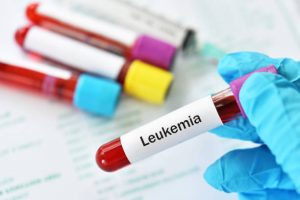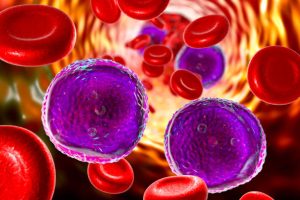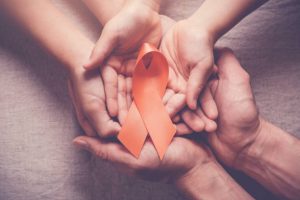Understanding what goes on in the body when it’s affected by a condition such as leukemia is paramount for both patients and loved ones alike. It’s a term that encompasses a group of cancers that typically begin in the bone marrow and result in a high number of abnormal white blood cells. In this comprehensive guide, you’ll learn about the symptoms, the various types, and the treatment options available for leukemia, arming you with the knowledge to confront this challenge.
Understanding Leukemia
Contents

Leukemia is a type of cancer that significantly impacts blood cells, predominantly affecting the white blood cells that are vital for safeguarding the body against infections. It’s a prevalent condition that touches many lives around the globe. With education and awareness, those affected by leukemia can manage the disease more effectively and advocate for their health.
The causes of leukemia are not entirely understood, but it’s known that certain risk factors, such as exposure to high levels of radiation or certain chemicals, can increase the likelihood of developing the condition. Moreover, genetic predispositions may also play a role. Given the gravity of leukemia, timely and accurate information is essential to encourage early detection and treatment.
Promoting leukemia awareness is significant because early diagnosis can lead to more successful outcomes. Understanding leukemia means recognizing that it can affect anyone, regardless of age or health status. As medical research continues to evolve, so too does the understanding of how best to manage and treat this complex condition.
Symptoms of Leukemia

The symptoms associated with leukemia can often be ambiguous and mistaken for signs of other less serious illnesses. Common indications include fatigue, easy bruising, frequent infections, weight loss, and night sweats. Patients may also report experiencing pain in the bones or joints, a symptom attributed to the proliferation of abnormal blood cells in the marrow.
Detailing every symptom is important as it enables potential sufferers to recognize the signs early and seek medical consultation. Beyond the mentioned symptoms, some individuals notice a swelling in the lymph nodes, abnormally pale skin, or a feeling of fullness below the ribs due to an enlarged spleen or liver. Persistent or unusual symptoms should always be evaluated by a healthcare professional.
If you or someone you know is experiencing persistent symptoms that align with those of leukemia, it’s vital to reach out to a medical provider. While these symptoms don’t necessarily mean leukemia is present, getting clarity on one’s health status is imperative. An accurate diagnosis is the first step towards appropriate treatment and, hopefully, recovery.
Types of Leukemia

Leukemia is typically classified into two main categories based on how quickly the disease develops and progresses: acute or chronic. Acute leukemia is characterized by the rapid increase of immature blood cells, while chronic leukemia progresses more slowly and involves more mature blood cells. Each type requires different approaches to treatment and has different prognoses.
Within these categories lie specific types of leukemia, such as Acute Lymphocytic Leukemia (ALL), Acute Myeloid Leukemia (AML), Chronic Myeloid Leukemia (CML), and Chronic Lymphocytic Leukemia (CLL). Each type affects a particular kind of cell and varies in prevalence across different age groups, with some types more common in children and others predominating in adults.
There are also rare forms of leukemia that don’t fit neatly into this classification and may behave in unpredictable ways. These exceptional cases highlight the complexity of leukemia and the need for a tailored approach to treatment. Advances in medical research continue to uncover more about these uncommon forms and how to combat them effectively.
Treatment Options for Leukemia

Upon a leukemia diagnosis, a range of treatments becomes available, depending on the type and stage of the disease, as well as the patient’s health profile. The mainstay of leukemia treatment often involves chemotherapy, which is used to kill leukemia cells. In some cases, radiation therapy, targeted therapy, or stem cell transplantation may also be viable options.
The medical community frequently heralds advancements in the treatment of leukemia, such as the development of newer, more targeted drugs that minimize damage to healthy cells, or immunotherapy, which harnesses the body’s own immune system to fight the cancer cells. These advancements underscore the progress made in treating this once-dreaded disease, providing hope to patients and families.

The tales of those who have faced leukemia head-on are nothing short of inspiring. Such narratives not only demonstrate the effectiveness of current medical interventions but also cast light on the deeply personal aspects of contending with the condition. Victory stories give us glimpses into the resilience and fortitude it takes to walk the challenging path of cancer treatment. These are the human experiences that fuel the ongoing quest for more advanced therapies and cures in the realm of medical science.
The Daily Realities of Leukemia

The day-to-day life of someone managing leukemia can look very different from what they once knew. It’s a new normal that involves a significant commitment to managing their health. From meticulously following treatment protocols and scheduling regular check-ins with doctors to being watchful for any shifts in their health status, patients’ lives often revolve around their treatment calendar. A system of support—an amalgamation of family, friends, and health professionals—is central to one’s ability to cope with the disease’s unpredictability.
Beyond the physical rigors of leukemia, recognizing and caring for one’s mental and emotional state is crucial. A multifaceted approach to well-being may include therapy sessions with mental health professionals, participating in support circles with other individuals who understand the unique challenges of living with leukemia, or deliberately engaging in hobbies and pastimes that instill a sense of peace and pleasure. The health of the mind is inseparable from the health of the body, and attention must be paid to both.
Awareness and Prevention in Leukemia Care

In managing leukemia, appreciating potential risks and proactive measures is key. Some risk factors, such as genetic disposition, past exposure to specific hazardous substances, or lifestyle choices like smoking, are known influencers in the development of leukemia. Understandably, the pathway to prevention isn’t straightforward, but adopting a well-balanced lifestyle and ensuring regular health evaluations stand as sensible steps towards wellness. Advancements in medical knowledge continue to shed light on ways to potentially fend off the disease.
Bringing Our Guide to a Close

Leukemia is an intricate condition, presenting individuals and medical professionals alike with an array of diagnostic and therapeutic hurdles. The journey requires an unwavering commitment to understanding the myriad symptoms, the nuances between different leukemia types, and the spectrum of available treatments. Knowledge truly is power, and equipping oneself with information is the launchpad for taking cancer head-on.
In the world of leukemia care, there’s an ongoing need for conversations with healthcare specialists and a thirst for knowledge on the latest advancements. Knowledge is the catalyst that empowers each person impacted by leukemia to face their condition armed with the best resources. As the medical community dedicates itself to this cause and supports from all corners pour in, the hope for a brighter, healthier future shines ever more brightly. Let this renewed sense of optimism be a beacon for all who navigate the complex waters of leukemia treatment and recovery.

